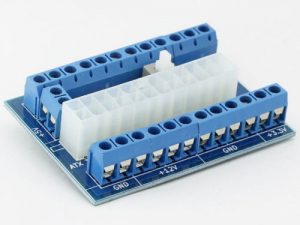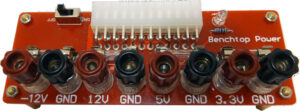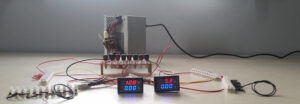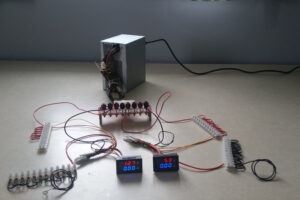Working with different electronics projects, and especially microcontrollers , requires different voltages (usually 3.3, 5 and 12 Volts). It is very fitting that the power supply used in most desktop computers (an ATX power supply) can provide exactly these voltages.
There are a number of projects (found via a Google search) that turn an ATX power supply into a bench power supply. Usually those projects highly modify the power supply itself and don’t break out all of the specific voltages it supplies.
Powering your electronics projects with an ATX power supply is actually pretty easy without modifying anything. The ‘secret’ is to plug the ATX power supply connector to an ATX breakout board. There are several types of these (boards) adapters. Pictured here are two different ones:
These breakout boards split off ground, 3.3, 5 and 12 volts. They have a power on/off switch that also turns on or off the power supply. The binding posts (or screw in connectors) can be wired to terminal blocks which allow more connections if needed.
To monitor voltage and amps used by your electronics, add a DSN-VC288 vols/amp measuring module or two. One can monitor the 5 volt circuit and one can monitor the 12 volt circuit. Here is how the DSN-VC288 is wired:
Here is what it looks like when all the pieces are wired together:







Recent Comments